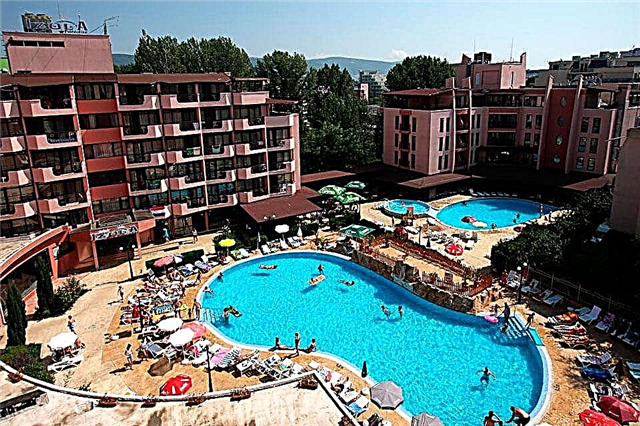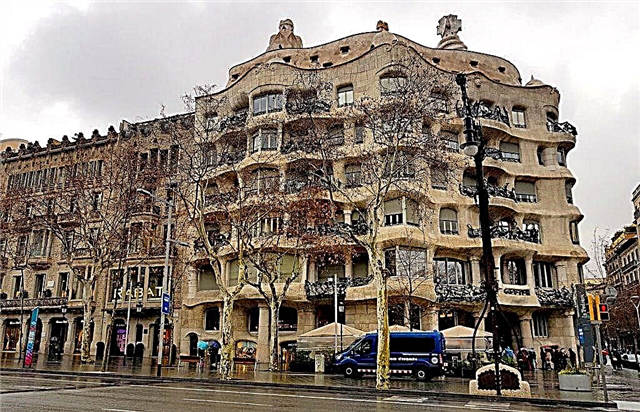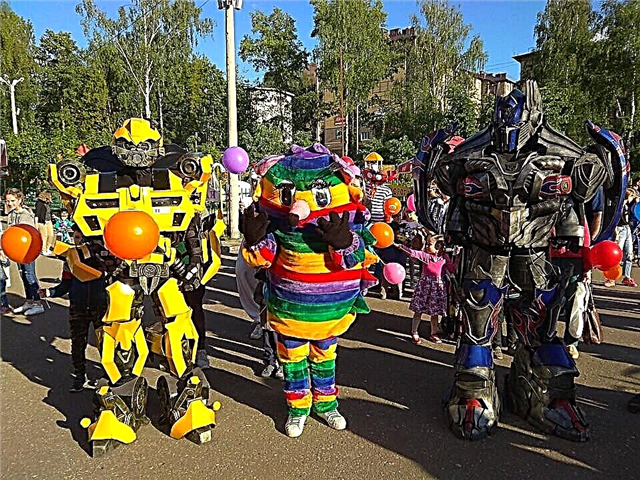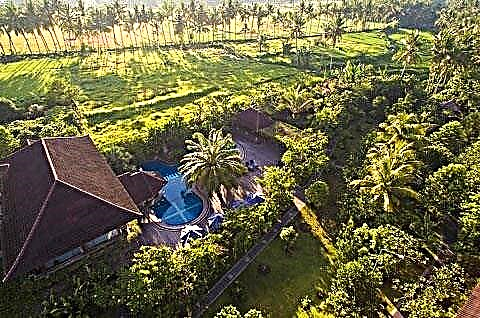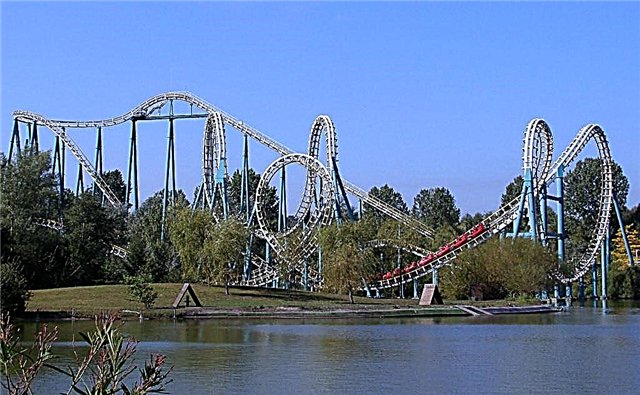The botanical garden in the village of Nikita (Crimea) owes its appearance to Duke de Richelieu, who in the 19th century served as Governor-General of the Novorossiysk Territory. His desire to create a state botanical garden was explained by the fact that the gardens laid earlier by Prince Potemkin were private, resold among wealthy people and eventually lost their significance.
Short description
Richelieu involved two more persons in the project for the development of the garden - the Tavrichesky governor Borozdin and the naturalist scientist Biberstein. Next a stage in the creation of a green corner on the Crimean peninsula was the signing by Alexander I of the decree on the organization of the Tavrichesky state, that is, the state botanical garden (Petersburg, June 1811).

Palm alley
It was decided to lay out the garden next to the village of Nikita, once founded by the Greeks. For this purpose, the state allocated 375 dessiatines of land and assigned a substantial amount of money by those standards for annual maintenance - 10 thousand rubles. However, at that time, the area adjacent to the village of Nikita was not ideal for setting up a garden - about a third of the entire land was really suitable for turning it into a garden, and the rest of the area was riddled with ravines and occupied by unattractive rocky slopes.

It is not known whether the Nikitsky Garden, erected on such an unsightly area, could later become a landmark of Crimea. But thanks to the efforts of a foreign botanist named Christian Steven, who was appointed director of the future botanical garden, the lands have changed significantly.

Devoted with all his heart to his beloved work, Steven got down to business. His plan was as follows. Collect seeds from the collection of all ornamental and agricultural plants of the Crimean peninsula and equip plantations of plants that can benefit both Taurida and Russia.

However, not everything went as smoothly as Steven wanted, because he lacked good gardeners, simple workers and money. And after three years, the Nikitsky Botanical Gardens announced their first successes. His catalog of plants - "natives" from nurseries, consisted of 15 decorative species, more than 50 varieties of pears and almost a hundred varieties of apple trees. Steven was a truly intelligent manager of the garden entrusted to him, he even managed to establish contacts with European institutions and individuals who sent him seeds and seedlings of the best plants of their countries.

Tulip festival
Every year the botanical garden was replenished with new plants. In 1828, the first vineyards appeared on its territory, and after them - magnolias, fan palms, plane trees, which to our contemporaries no longer seem to be something supernatural - they have taken root so well on the Crimean land.
With the arrival of the new director N.A. Gartvis to the Nikitsky Botanical Gardens. the collection of a green corner in Crimea began to be replenished with previously unseen conifers. On the territory of the garden there appeared such unique plantations as: azalea, Californian sequoia, cypress, Caucasian fir, rhododendron, cedar, pine and oriental spruce.

At the beginning of the 20th century, botanist Wulf collected a gorgeous herbarium, made up of one hundred thousand leaves and conveying the uniqueness of the Crimean flora. During the Great Patriotic War, this "bouquet" was stolen by the Germans, but it was destined to return to its place - already the next director of the botanical garden Koverga A.S. found a herbarium in one of the German towns and brought it to the Crimea.

Today, the number of plants in the Nikitsky garden is approaching 30,000 varieties, but the real pride of the garden is all the representatives of the flora brought from the subtropical belts of our Earth..
In whatever season of the year, tourists visit this wonderful park, they always see flowering plants. Nikitsky Botanical Park is attractive for its annual flower balls. They start with a tulip exhibition held from mid-April to early May.

At the "Tulip Parade" you can see all their varieties, planted in open ground. From the beginning of June, the next ball opens - in honor of roses. Now everyone can admire all the wealth of foreign and domestic selection, because there are really a lot of roses in the garden - about 2 thousand varieties. And with the arrival of autumn, chrysanthemums show their beauty at the next ball.
Architectural features of the Nikitsky Botanical Garden

The Nikitsky Botanical Garden is characterized by a non-standard layout, and it is this that makes its territory unique. So, it is not divided into groups of plants - systematic and specific, but is designed as a landscape park, in which the selection of flora was carried out in combinations close to the natural natural conditions inherent in the area. The landscape of the botanical garden is represented by a labyrinth of winding paths leading to thickets of bamboo, palms, roses, albacia, sakura and other lovely plants that adorn the garden in myriad numbers. Conifers and deciduous, evergreen and rapidly fading - all representatives of the flora have gathered here.

Cactus greenhouse
Cape Martyan adjoins the botanical garden in the east. This ridge, crossed by many deep beams, is surrounded by greenery of juniper bushes, wild apple trees, oak trees, pistachio trees and thickets of wild strawberries.
Parts of the Nikitsky Botanical Garden
The entire territory of the garden is divided into three parks, each of which has its own name - Upper, Lower and Primorsky... The layout of the Upper Park was carried out in a landscape style, and the purpose of its arrangement was to obtain a place for rest and walks among green lawns.

View of the pool and the statue of the goddess of flowers Flora
But as the garden collection was replenished, the plantations were located close to each other and turned the territory allotted to them into an arboretum. The landscape of the Upper Park is represented by a flat surface without noticeable relief changes, and its distinguishing feature from other parts of the Nikitsky Botanical Garden is a combination of dense plantations of trees with open lawns flooded with sunlight. The main parterre equipped with a rectangular pool, the colonnade of the summer theater and a palm alley are also considered to be the peculiarities of the Upper Park.

Goddess of flowers Flora
The lower park stretches on a rocky slope and occupied ancient terraces, the movement between which becomes possible thanks to the presence of numerous stairs. The lower park is the oldest part of the botanical garden, because it was from this place that the planting of valuable tree species once began.
Its wealth is not only plants - many pools, different in size and shape, decorated with fountains, flowers and papyrus, streams and fountain-bowls have become a real decoration of the old garden and organically fit into the floral ensemble. An attractive corner of the park is a small rocky garden, the plantings of which are represented only by cacti and milkweed. They are surrounded by a sculpture called "The Boy Taking Out a Thorn". Also, on the territory of the Lower Park, you can walk along a long palm alley, which has collected the best types of palm trees.

The third part of the garden is Seaside Park, the youngest. It was equipped on the occasion of the centenary of the founding of the Nikitsky Botanical Garden, which falls on the beginning of the 20th century. Seaside Park consists of several zones adjacent to the sea coast. And this arrangement allowed the gardeners to grow here thermophilic plants, which are suitable for the conditions of subtropical regions. When you visit the Seaside Park, you get the impression of being in a subtropical forest, this territory is so thick and shady.

Everyday life of the Nikitsky Botanical Garden
Nikitsky Botanical Garden is not just another attraction of the Crimea, it is a whole research center conducting specific activities and cooperating with many similar gardens around the world (seeds and information are exchanged in all directions).

Administrative building
In addition to traditional flower balls, exhibitions of insects, orchids, exotic butterflies and reptiles are held on the territory of the Nikitsky Garden... In addition, small flower pavilions are always open here, where you can buy seedlings of your favorite plants and take them with you for planting in your home garden.
Attraction rating:




